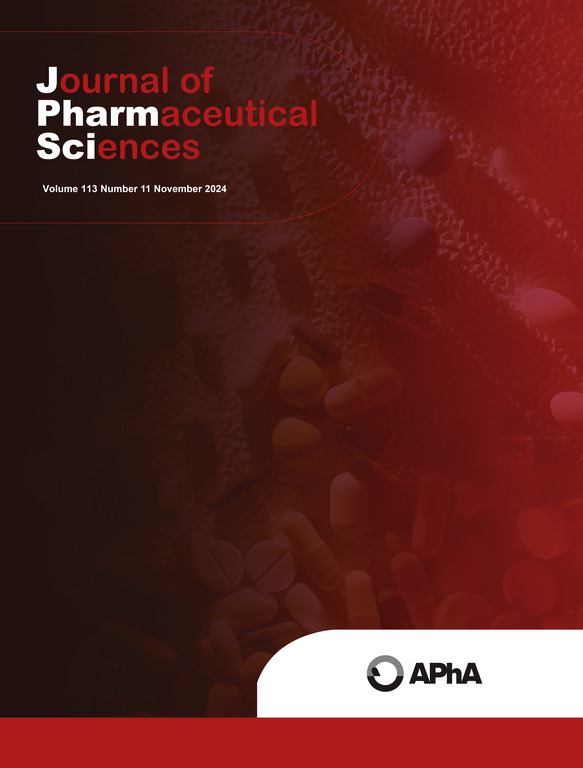AI-enhanced X-ray microscopy for non-destructive detection, quantification, and particle size analysis of crystalline miconazole in amorphous solid dispersions
IF 3.7
3区 医学
Q2 CHEMISTRY, MEDICINAL
引用次数: 0
Abstract
In the pharmaceutical industry, amorphous solid dispersions (ASDs) are commonly utilized to enhance the solubility and bioavailability of poorly soluble active pharmaceutical ingredients (APIs). Polymers such as copovidone are also frequently employed as stabilizing agents in ASDs due to their ability to reduce the thermodynamical instability of the amorphous form compared to their crystalline form. Detecting and measuring any crystalline API particles present in the ASD formulation is critical for ensuring drug efficacy and stability. In this study, ASD tablets miconazole in a copovidone matrix spiked with known concentration of crystalline miconazole were characterized by X-ray microscopy (XRM). We demonstrate how XRM combined with AI-assisted image segmentation can provide quantitative characterization of crystalline particles, including detailed particle size distribution (PSD) information. The AI-assisted image processing model was found to be robust, reducing human error associated with traditional threshold selection. Additionally, we evaluated particle size changes from the blend to the final drug product to understand how the API and excipient behave during tablet manufacturing. This approach has broader applications in drug product development, particularly in monitoring recrystallization and evaluating process-induced changes during blending and compression.
人工智能增强x射线显微镜用于非晶固体分散体中咪康唑晶体的无损检测、定量和粒度分析。
在制药工业中,无定形固体分散体(ASDs)通常用于提高难溶性活性药物成分(api)的溶解度和生物利用度。聚合物如copovidone也经常被用作asd的稳定剂,因为它们能够减少非晶态的热力学不稳定性。检测和测量ASD制剂中存在的任何结晶API颗粒对于确保药物疗效和稳定性至关重要。在本研究中,用x射线显微镜(XRM)对已知浓度的咪康唑晶体在聚维酮基质中添加的ASD片进行了表征。我们展示了XRM如何结合人工智能辅助图像分割提供晶体颗粒的定量表征,包括详细的粒度分布(PSD)信息。人工智能辅助图像处理模型具有鲁棒性,减少了与传统阈值选择相关的人为错误。此外,我们评估了从混合物到最终药物的粒度变化,以了解原料药和赋形剂在片剂生产过程中的表现。这种方法在药品开发中有更广泛的应用,特别是在监测再结晶和评估混合和压缩过程中引起的变化方面。
本文章由计算机程序翻译,如有差异,请以英文原文为准。
求助全文
约1分钟内获得全文
求助全文
来源期刊
CiteScore
7.30
自引率
13.20%
发文量
367
审稿时长
33 days
期刊介绍:
The Journal of Pharmaceutical Sciences will publish original research papers, original research notes, invited topical reviews (including Minireviews), and editorial commentary and news. The area of focus shall be concepts in basic pharmaceutical science and such topics as chemical processing of pharmaceuticals, including crystallization, lyophilization, chemical stability of drugs, pharmacokinetics, biopharmaceutics, pharmacodynamics, pro-drug developments, metabolic disposition of bioactive agents, dosage form design, protein-peptide chemistry and biotechnology specifically as these relate to pharmaceutical technology, and targeted drug delivery.

 求助内容:
求助内容: 应助结果提醒方式:
应助结果提醒方式:


